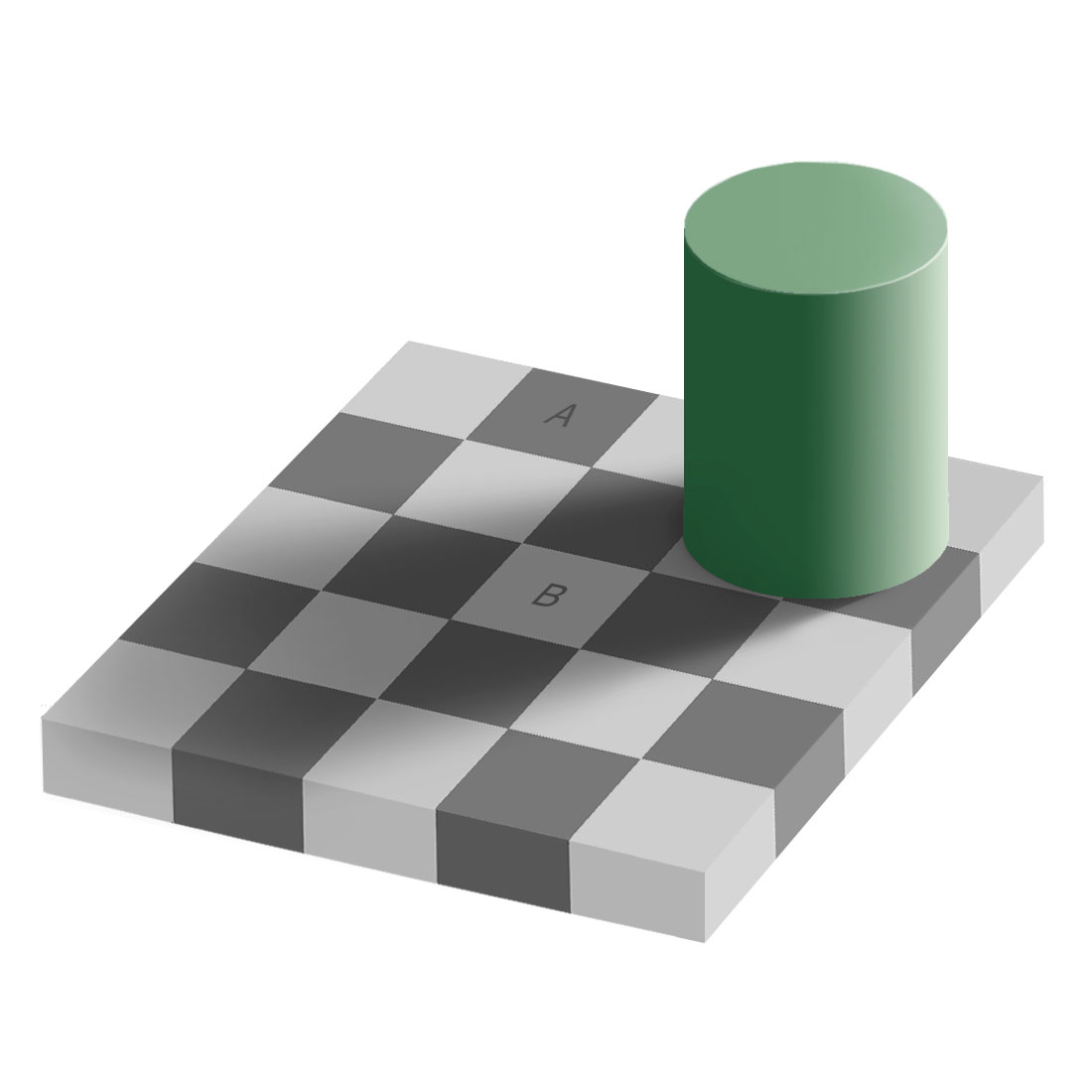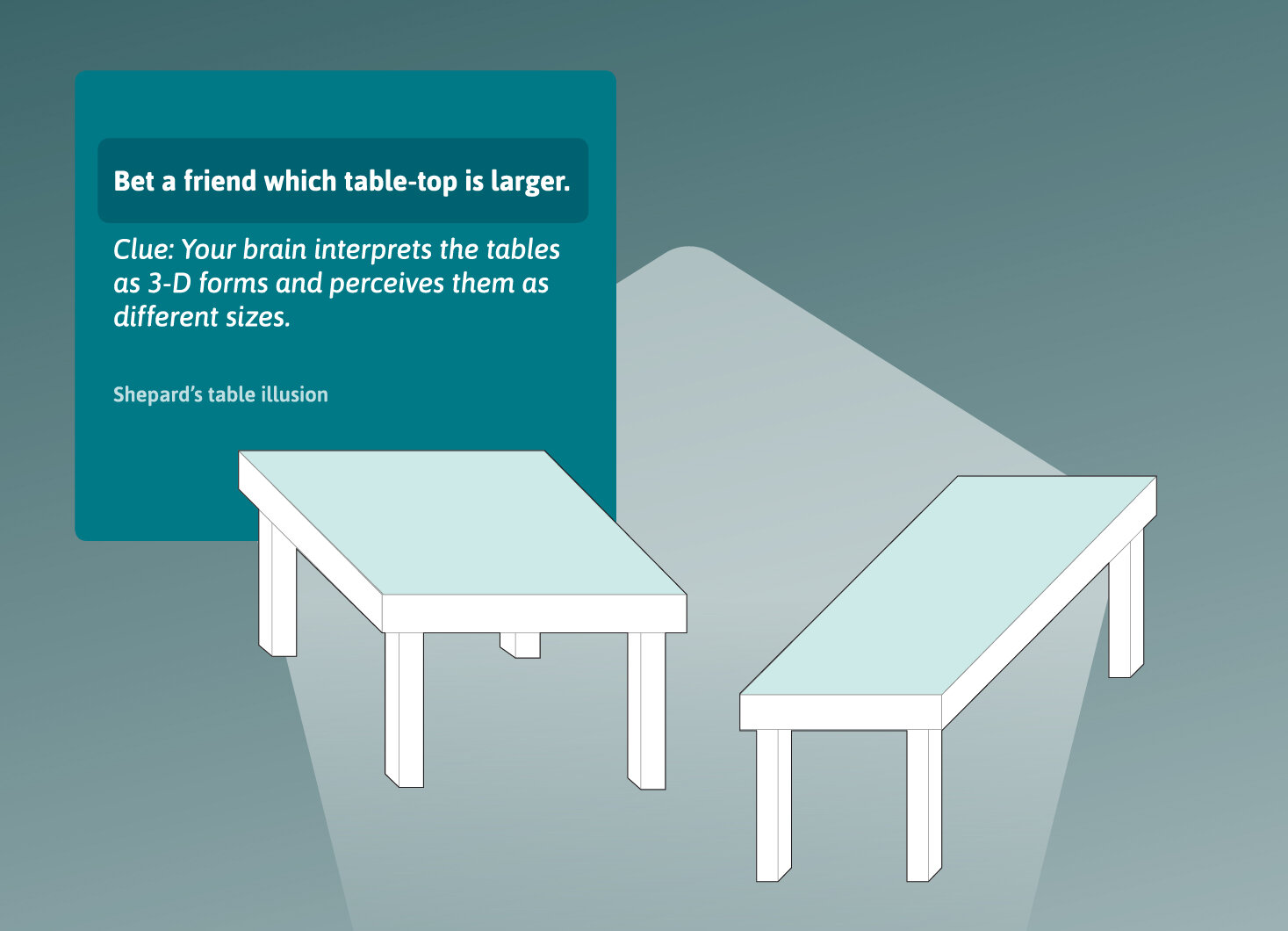VISUAL ILLUSIONS
Illusions demonstrate how your brain jumps to conclusions to help you quickly recognize familiar information. Your brain constantly collects sensory cues (like sights, sounds, and smells) and relies on memories to construct your perception of reality. For hundreds of years, scientists and artists have studied and played with illusions. Virtual and augmented reality use them too.
TRY THIS!
RETHINK REALITY
Ebbinghaus Illusion
Which red circle is larger?

Try it
Move your mouse over the image or, if you’re viewing this on a phone, tap the image to find out!
Checker Shadow Illusion
Do the squares labelled A and B look the same shade of gray or different?

Try it
Hover your mouse over the image or, if you’re viewing this on a phone, tap the image to find out!
WHAT'S GOING ON?
Optical illusions, like virtual reality, rely on visual trickery to challenge human perception. For example, in the Ebbinghaus Illusion the relative size of the gray circles influences your brain's perception of the red circles. The Checker Shadow illusion also illustrates how we don’t always see what we think we see. Your brain focuses on the 3D cues of the checkerboard: the cylinder’s shadow, the board’s sides. Once your brain decides this is a 3D scene, it interprets the light squares as always lighter than the dark squares. Now watch the video below which explains in more detail how this works.
SHEPARD’S TABLE ILLUSION
Materials
Printed page
Scissors
Try it
Print out the Shepard's Table Illusion pdf image.
Using scissors cut out the two tables.
Place the rectangles on top of each other.
Observe it
Which table is bigger?
WANT TO LEARN MORE?
Watch Michael Abrash, Chief Scientist at Oculus, describe how reality is constructed by our brains, and why that matters for VR.
Make a 3D Model Optical Illusion
Print, cut, fold and assemble your own Thinky the Dragon. You will be amazed to notice that his eyes follow you around the room. Follow the instructions from this page.
© 1998, 2010, ThinkFun, Inc.
Dragon design by Jerry Andrus.
www.ThinkFun.com/thinky









